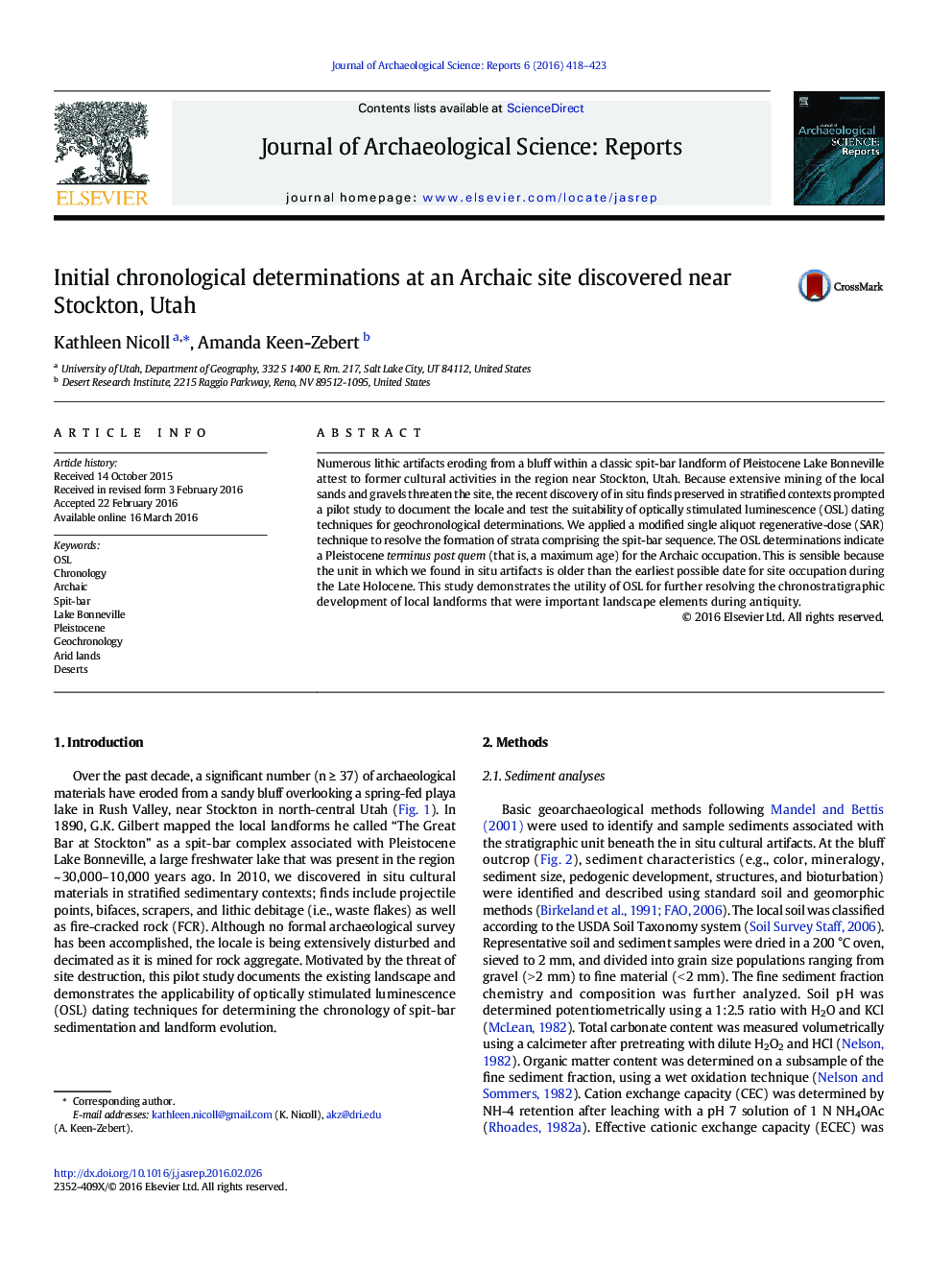| Article ID | Journal | Published Year | Pages | File Type |
|---|---|---|---|---|
| 7446618 | Journal of Archaeological Science: Reports | 2016 | 6 Pages |
Abstract
Numerous lithic artifacts eroding from a bluff within a classic spit-bar landform of Pleistocene Lake Bonneville attest to former cultural activities in the region near Stockton, Utah. Because extensive mining of the local sands and gravels threaten the site, the recent discovery of in situ finds preserved in stratified contexts prompted a pilot study to document the locale and test the suitability of optically stimulated luminescence (OSL) dating techniques for geochronological determinations. We applied a modified single aliquot regenerative-dose (SAR) technique to resolve the formation of strata comprising the spit-bar sequence. The OSL determinations indicate a Pleistocene terminus post quem (that is, a maximum age) for the Archaic occupation. This is sensible because the unit in which we found in situ artifacts is older than the earliest possible date for site occupation during the Late Holocene. This study demonstrates the utility of OSL for further resolving the chronostratigraphic development of local landforms that were important landscape elements during antiquity.
Related Topics
Social Sciences and Humanities
Arts and Humanities
History
Authors
Kathleen Nicoll, Amanda Keen-Zebert,
